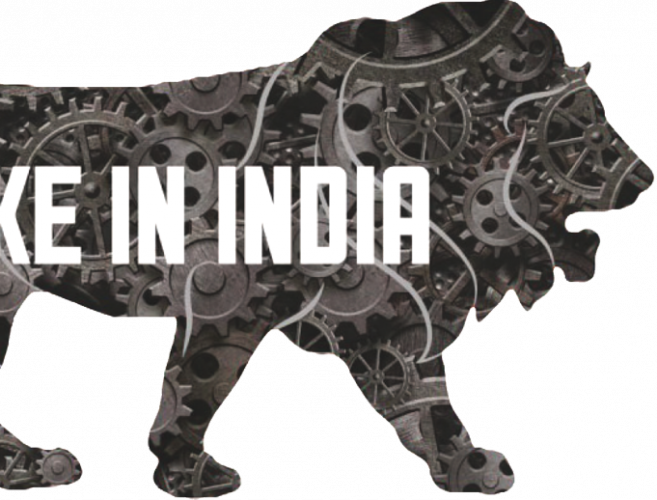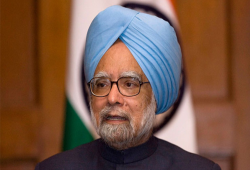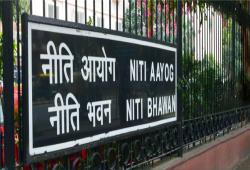
The announcement that Parag Agrawal, a young alumnus of an Indian Institute of Technology (IIT), has been appointed the CEO of a global tech firm, Twitter, swelled some more pride in Indian chests. Indians are getting used to such news. The CEOs of many US tech firms are Indians—Microsoft, Google, IBM, Adobe, Micron, VMWare, Palo Alto Networks—to name a few prominent ones. Many of them studied in an IIT. Clearly Indian IITs provide world-class tech education at very low cost.
India needs leaders who create products for its citizens. That is the difference between, say, a Sundar Pichai and a JRD Tata
The technology space is producing many shooting stars especially in the US: in the forms of multi-billion, and even trillion-dollar tech corporations, and their CEOs who are the richest people in the world. Investors in these companies have become very wealthy. Marianna Mazzucato explains, in Mission Economy: A Moonshot Guide to Changing Capitalism, that the fact that the success of these US companies is not just the genius of their founders, and that they have been built with large government support, seems to have been lost sight of amidst the hype of private wealth creation.
Many successful CEOs (of US as well as Indian IT giants) were born in poorer Indian families. They could afford an education in an IIT because it is highly subsidised by the Indian government. Jawaharlal Nehru was the visionary who founded many Indian scientific institutions. Indians reaching the global “commanding heights” of technology are a partial realisation of Jawaharlal Nehru’s vision of India’s “tryst with destiny”.
India ranks very low in global rankings of human development, even behind its economically poorer sub-continental neighbours. Masses of Indian citizens suffer from degrading poverty, poor public services, and have limited opportunities to earn adequate incomes with dignity. They might wonder what India’s globally admired technologists, highly subsidised by their government, have done for the poor people of India.
However, the rest of India’s tryst with destiny is far away. We have ‘miles to go before we sleep’, in the words of Robert Frost that Nehru kept on his desk. India ranks very low in global rankings of human development, even behind its economically poorer sub-continental neighbours. Masses of Indian citizens suffer from degrading poverty, poor public services, and have limited opportunities to earn adequate incomes with dignity. They might wonder what India’s globally admired technologists, highly subsidised by their government, have done for the poor people of India.
Speaking at the HT Leadership Summit 2021, Sundar Pichai, CEO Google, said, “I’m excited about ‘building for India first’, and also building in India to solve problems globally as well.” Indian IT companies—TCS, Infosys, and others, have used low-cost Indian engineers, produced by the highly subsidised Indian tech education system, to solve problems of foreign companies in foreign countries. They have earned valuable foreign exchange for the country. They paid much lower taxes than Indian manufacturing companies as an incentive to export. They have made good profits. The excellence in their services has enhanced the impression of India abroad and made India proud.
The ideological bias that trade purists have against ‘make in India by India’ must be shed. The Indian government must consider the needs of India’s poorest citizens to frame policies to improve all citizens’ ‘ease of living’, and not be overly swayed towards improving ‘ease of doing business’ for foreign investors.
However, Indian IT stars have not done much to build “for India”. In fact, Indian manufacturing companies, who were building for India until the 1980s, relying on the IITs to provide them with the talent they needed, found India’s best talent being attracted away from the hard work on factory floors to air-conditioned jobs in the IT sector and opportunities to work and live abroad.
“Make in India by India, and for India too” has become imperative for many reasons. One, with global supply chains breaking down on account of the continuing Covid crisis, self-reliance is necessary. A larger reason is that, even before the pandemic, the Indian economy was not generating enough jobs with adequate incomes even when the GDP grew well. The opening of the Indian economy to international trade in the 1990s satisfied the consumption aspirations of Indian citizens by providing them access to foreign brands and low-cost products from around the world. However, to buy what is on offer, they must earn enough. Therefore, citizens must be producers also, not just consumers. It did not help them when even established Indian brands (of electrical goods, furniture, etc.) began to outsource production to China to increase their margins.
Many foreign companies who came to produce in India since the 1990s retained ownership of the research and technology (the IPR) in their home countries. Before the liberalisation era, they had to pass on the technology to their Indian partners in ‘phased manufacturing programs’, an effective strategy India followed before the WTO banned it, Thereafter, even though Indian manufacturing grew in scale, it became shallow, with less technological depth than its competitors. China, meanwhile, was accused of ‘stealing’ technology because it continued to insist on foreign companies sharing knowledge with local partners. The result is that Indian companies have become dependent on Chinese companies (as have US companies too) for many vital inputs. Therefore, ownership of technology by Indian companies has become a strategic imperative along with “Make in India”.
India needs more leaders of organisations that create wealth by the people for the people, and whose products serve India’s needs
The ideological bias that trade purists have against ‘make in India by India’ must be shed. The Indian government must consider the needs of India’s poorest citizens to frame policies to improve all citizens’ ‘ease of living’, and not be overly swayed towards improving ‘ease of doing business’ for foreign investors.
J.R.D. Tata had nurtured many Indian companies to make in India for India during the difficult years, pre- and post-Independence, when India’s manufacturing base was very weak. He said that, whenever he had to take a difficult decision, he would ask himself first what is good for India, and then what is good for Tatas. And, whenever he did what was good for India, it always turned out to be good for Tatas too in the long run. Sundar Pichai, the head of a global company in the USA, with most of its investors and employees outside India, cannot put India first in his decisions, as JRD Tata did. Even US Presidents have begun to demand that US companies must put America first. Because US citizens need jobs, and the US government needs taxes to provide public services.
India needs more leaders of organisations that create wealth by the people for the people, and whose products serve India’s needs. Indian IT companies must take this more difficult route now. India needs many manufacturing champions too. India needs industry leaders who are India builders. That is the way to build India’s economy to make India strong in global trade and geo-politics too.
(The writer is a former member of the Planning Commission and author of “The Learning Factory: How the Leaders of Tata Became Nation-Builders”)







